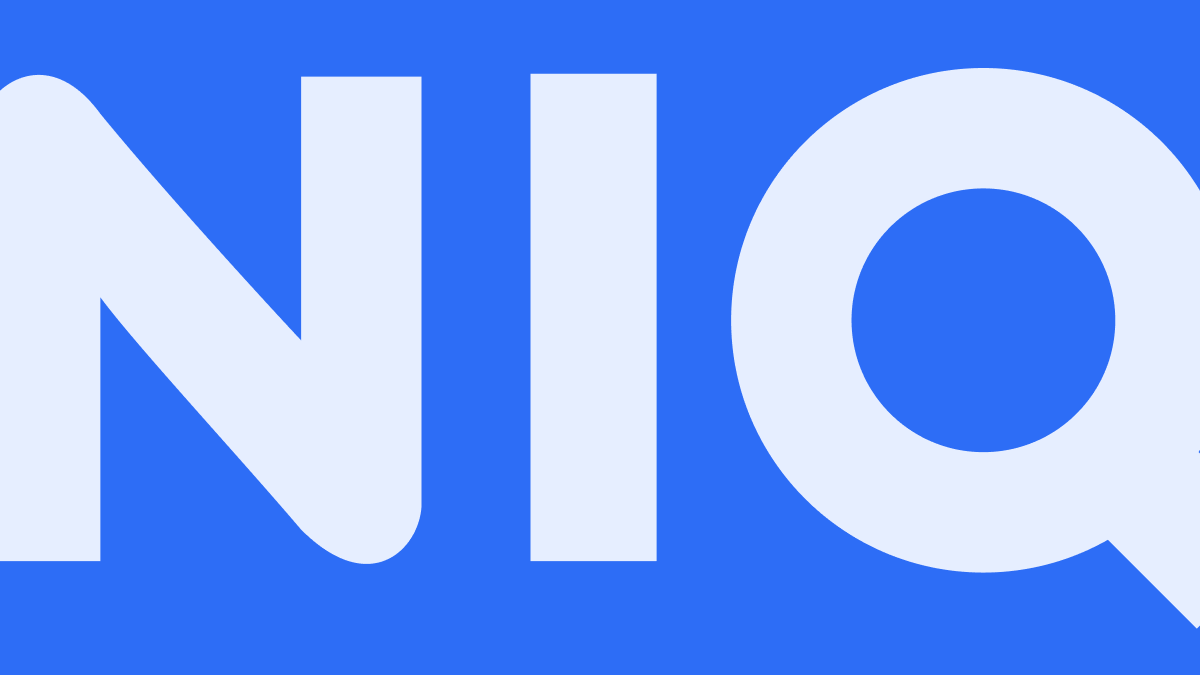- Consumer 150
- Posts
- F&B’s Unstoppable Wave—Dig In
F&B’s Unstoppable Wave—Dig In
Today we’re diving into food and beverage PE activity, Argentina leading the charge in ecommerce growth, tariffs risking consumer tech spending hitting new highs, and Gen Z averaging 7.2 hours daily in entertainment.

Good morning, ! It’s Thursday and we’re diving into food and beverage PE activity, Argentina leading the charge in ecommerce growth, tariffs risking consumer tech spending hitting new highs, and Gen Z averaging 7.2 hours daily in entertainment.
First time reading? Join the execs and operators shaping the future of consumer markets. Subscribe here.
Know someone deep in the consumer space? Pass this along—they’ll appreciate the edge. Share link.
— The Consumer150 Team

Mergers, Markets & Meals: Private Equity’s Appetite for the Food & Beverage Industry
Private equity is loading its plate with the food & beverage sector, and it’s not just a side dish, it’s the main course. Behind the scenes of your grocery aisles and meal delivery apps, billions in private capital are flowing into the brands you buy and the trends you follow. From plant-based proteins to premium snacks, investors are betting big on what’s next for our plates.
Despite inflation and a few supply chain headaches, the sector is proving its resilience. What’s driving the momentum? Shifting tastes, health-conscious consumers, and an appetite for convenience. This report breaks down the investment boom, the rising stars of the F&B world, and where the next wave of deals is set to land.
If you’ve ever wondered who’s backing your favorite snack brand, or how frozen food became hot again, you’re in the right place. Dig in.
Want to learn more?
Premium Perks
Since you are an Executive Subscriber, you get access to all the full length reports our research team makes every week. Interested in learning all the hard data behind the article? If so, this report is just for you.
|
Want to check the other reports? Access the Report Repository here.

U.S. Household Debt Growth Stabilizes, but at Elevated Levels
After peaking at 9% growth in 2022, U.S. household debt growth has cooled to a steadier 4% pace in 2023 and 2024. While that’s a relief from the post-pandemic borrowing surge, it's still double the growth rate from a decade ago.
Why it matters: Households are feeling the squeeze. Even as inflation cools, higher interest rates are keeping debt burdens elevated. Consumers continue to lean on credit cards and personal loans to navigate rising living costs, signaling persistent financial strain beneath the surface.
For brands and lenders, this signals a shift: spending resilience is there, but it’s increasingly debt-fueled. Expect more focus on affordability, payment flexibility, and financial wellness as consumers balance their budgets.
Bottom line: Debt-fueled spending can only last so long. Watch this space for cracks.
In Partnership with Build Wealth
WSJ Bestselling Author Walker Deibel’s BuildEnergy Fund Leverages 4-Decade Track Record (Over 65% Subscribed!)
BuildEnergy Fund I is officially open to accredited investors! This $100 million cashflowing fund offers family office terms and 30%+ IRR to its investors.
Why invest? Walker Deibel, the serial entrepreneur, WSJ bestselling author, and founder of Build Wealth sees this fund as hitting all facets of his Growth Predictor Framework:
Experienced Operating Team – A 4-decade / 6-fund track record of strong returns, including IRRs averaging 50%
Attractive Returns – Prior fund is already cash flowing 15% cash-on-cash, and estimated 35% IRR only 18 months in.
Institutional-Level Terms – Direct access to a $5M family office buy-in structure, reflecting a 7% immediate paper gain.
Focused Sector Approach – A strategic, supply / demand imbalance play, acquiring $100 million roll-up of oil wells during a buyer’s market.
If you’re an accredited investor, you can get access to the data room here:
For questions, reach out to Mike Brown, Head of Investor Relations: [email protected]

Argentina Outruns the Tigers
In 2024, Argentina sprinted past Asia’s usual eCommerce suspects—clocking a 29% YoY growth rate and stealing the crown from last year’s champ, the Philippines. A big part of that? Mercado Libre, Latin America’s eCommerce juggernaut and fintech darling, doing everything short of launching satellites.
While India and Indonesia sit at a respectable 20% growth, and Malaysia rounds out the top five at 18%, Argentina is the true outlier. Improved 4G access helped, sure—but when your national champion is also your Shopify, PayPal, and Amazon rolled into one, the race isn’t even close.

Hershey’s Snack Attack: LesserEvil Edition
Hershey just took another big bite out of the salty snack market, scooping up LesserEvil, the organic snack maker, for around $750 million. Known for popcorn and puffs with oils you actually recognize (coconut, avocado), LesserEvil fits perfectly into Hershey’s "better-for-you" playbook.
It's not Hershey’s first foray here—think SkinnyPop, Pirate’s Booty, and Dot’s Pretzels—but it’s a sharp move as salty snacks still only make up 10% of Hershey’s revenue. CEO Michele Buck calls this a way to grab more "eating occasions," translation: sell you snacks from brunch to bedtime. Deal closes later this year, keeping LesserEvil’s team on board.
Sponsored Content
The Secret to Turning Products Into 7-figure Listings.
Scale your Amazon growth by driving high volume sales and improve your listing’s search positioning. Using Stack Influence’s unique platform, brands like Magic Spoon, Unilever, and Farmacy have increased their monthly revenue as high as 13X in as little as 1 month.
Some of the benefits for sellers are:
Increase Amazon listing search positioning (drive high volume external traffic sales)
Pay influencers only in products (stop negotiating fees with every influencer)
Generate branded image/video UGC with full legal rights (no timeframe or usage restrictions)
Develop affiliate relationships (easily identify top influencer candidates to work with in the long run)
Automate influencer collaborations from A-Z (save over 175 management hours per month)

Younger Shoppers Are Driving the Gift Card Boom
In the 2024 holiday season, gift cards were a clear winner—especially among younger consumers. Nearly three-quarters (76%) of 18–24-year-olds received at least one gift card, with 29% scoring multiple cards. Compare that to older shoppers (55+), where 57% received no cards at all.
Why it matters: For brands and retailers, this is a generational goldmine. Younger consumers want flexibility and prefer choice over guesswork, making gift cards an increasingly essential part of holiday strategies. But the gap across age groups highlights an untapped opportunity: how do you get Boomers and older Gen Xers to see the appeal?
As digital wallets and e-commerce continue to rise, expect gift card adoption to deepen, both as gifts and as personal budgeting tools.
Bottom line: The message from younger shoppers is clear: cash is fine, but a card with options is even better.

Consumer Tech Spending Record? Tariffs Say: Not So Fast
Americans are poised to splurge a record $537 billion on consumer tech this year, but there’s a major cloud on the horizon: proposed tariffs from the Trump administration. Per the Consumer Technology Association (CTA), these tariffs could jack up smartphone prices by 25%, vaporize over $25 billion in U.S. purchasing power, and slice laptop and tablet sales by nearly 70%.
The CTA’s forecast looked rosy pre-tariffs, calling tech America’s "economic engine," but tariffs could stall the ride. The total hit? A chilling $90 to $140 billion dent in purchasing power. Nothing like a tech boom getting sideswiped by policy whiplash.

Cheers to December
It’s official: December isn’t just festive, it’s an absolute liquor sales bonanza. According to the data, U.S. beer, wine, and liquor store sales in December clock in at a staggering $5.34 billion, dwarfing every other month.
For context, even the usual summer spikes (think July at just over $4B) feel like an appetizer next to December’s main course. Blame holiday parties, year-end celebrations, or just family survival kits. Either way, for beverage sellers, it’s not just the season of cheer—it’s the season of cash flow.

Gen Z Leads Media Consumption, But Boomers Love Their Cable
In the media marathon, Gen Z is setting the pace with 7.2 hours of daily entertainment consumption, well above the overall average of 6.1 hours. Their time is split across streaming (1.3 hrs), user-generated content (1.1 hrs), social media (1.0 hr), and gaming (0.9 hrs)—a true platform agnostic generation.
Why it matters: For brands, this confirms a clear generational divide. Boomers and Matures remain loyal to traditional TV, clocking in 2.1 and 2.3 hours of cable viewing daily, respectively. Meanwhile, Gen Z and Millennials are deep in streaming, social, and user-generated content ecosystems, which means different ad strategies, platforms, and engagement models are required.
The big picture: The fragmentation of media consumption is real, and brands chasing younger audiences need to meet them in their digital playgrounds, not their parents’ living rooms.
Bottom line: Age matters, but attention matters more. Target accordingly.

"The road to success and the road to failure are almost exactly the same."
Colin R. Davis






